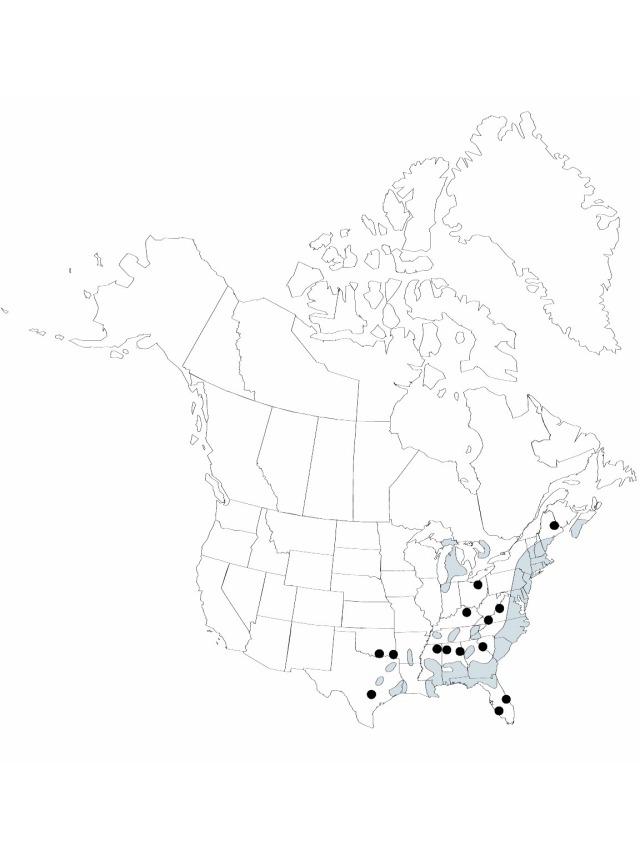Difference between revisions of "Xyris difformis var. difformis"
FNA>Volume Importer |
FNA>Volume Importer |
(No difference)
| |
Revision as of 19:02, 24 September 2019
Herbs, 20–70(–90) cm. Leaves in broad to narrow fans,10–30(–50); sheath blade deep green, linear–sword-shaped, 0.2–1.5 cm wide, smooth, margins papillate. Inflorescences: scape sheaths basally pinkish; scapes widened distally, smooth or very finely papillate, 2–several-ribbed, 2 ribs wider, making wings, other ribs low or absent, all ribs smooth or papillate; spikes (in s part of range) mostly 10 mm or more. Seeds translucent. n = 9.
Phenology: Flowering summer–fall.
Habitat: Sands and peats or gravels of edges of acidic swamps, pond shores, bogs, poor fens, seeps, open sphagnous areas
Elevation: 0–500 m
Distribution

N.S., Ont., Ala., Ark., Conn., Del., D.C., Fla., Ga., Ind., Ky., La., Maine, Md., Mass., Mich., Miss., N.H., N.J., N.Y., N.C., Ohio, Okla., Pa., R.I., S.C., Tenn., Tex., Vt., Va., Wis.
Discussion
The tallest, broadest-leaved, broadest-scaped, and largest-spiked plants are mostly in the southern Atlantic and Gulf coastal plains. Those of the Appalachians and from Delaware north become progressively lower and smaller in dimension. In the maritime provinces, in New England, and along the Great Lakes, the plants become more similar to the often associated Xyris montana Ries, and some morphological intermediates appear. Xyris montana, however, has generally smaller spikes with darker bracts and with less distinct dorsal areas; leaves generally of narrower outline, with papillate sheaths; and lateral sepals that sometimes have slightly exserted tips, usually with firmer keels, and especially with thicker and redder apices. Seeds of X. montana are distinctly longer and narrower in outline.
Selected References
None.